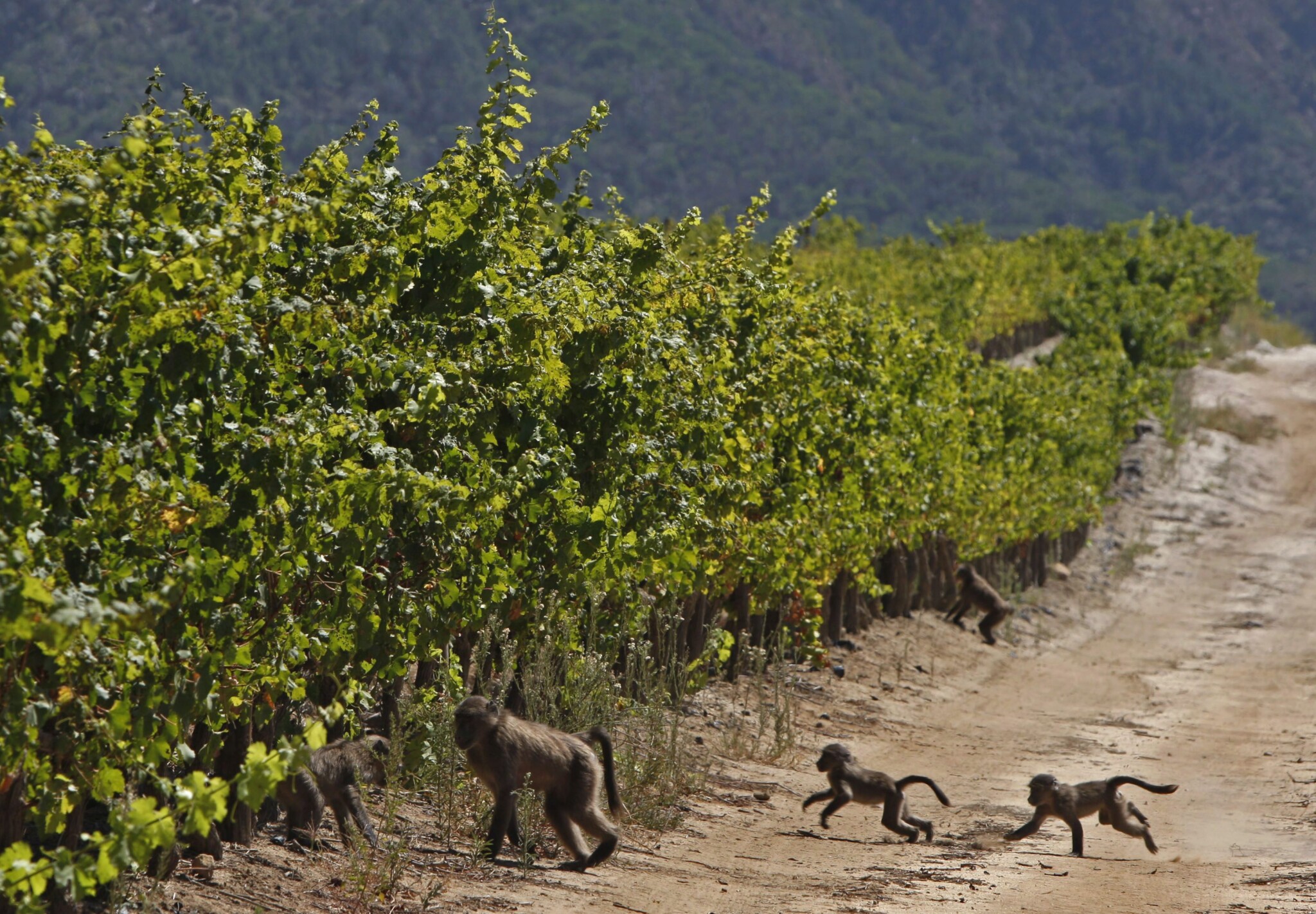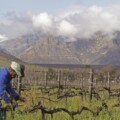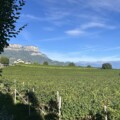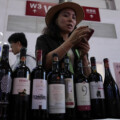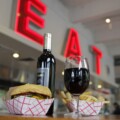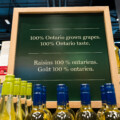It was late on the second day of the Cape Wine 2025 trade show, around four o’clock, when things started to wind down. I received a message from my Wines of South Africa Canada minder: “Can you meet Ken Forrester at the Table Mountain cable car at 7AM tomorrow?”
“Oh, yes,” I replied,” I can.”
This was my second Cape Wine trip, but the return had taken awhile: 13 years. My first time I was blown away by the beauty of the Western Cape of Africa. I traveled around the wine country hills and valleys around the three towns of Stellenbosch, Paarl, and Franschhoek. I also explored the old town of Cape Town that lay into its harbour that seemed like the end of the world, always under the great stone curtain of Table Mountain.
That image is what I remembered about Table Mountain, and I saw it again on my return. It looked a bit like a rock cliff. But once Forrester took me and a small band of Canadian wine journalists up it, I learned that behind that cliff face was a great spine of a mountain and a range that extended to make up the Cape of Good Hope peninsula itself.
Writers are always looking for a device or a hook, and it occurred to me that morning that Table Mountain might make a good metaphor for the South African wines I tasted while I was at the show. There’s more to them than meets the eye at first glance.
The big brands that dominate South African wine exports often lean on the country’s 350-plus years of winemaking. But beyond the large volume producers, there are many independents making fine wines that are both attuned to modern tastes and reliant on old vines. South African wines might be said to have a tradition of innovation and rediscovery.
In my last column, I wrote about the maverick winemakers from west of Stellenbosch who called themselves the Swartland Revolution. They were the hot booth at Cape Wine 2012. By 2025, that torch had been passed on to a new group of younger winemakers who call themselves the Zoo Cru.
The Zoo Cru table was a large inverted horseshoe, and it always had something of a line-up for the chance to taste with any of the individual winemakers or wineries. I visited it every day for three days and still didn’t taste all the wines. But I tasted enough of them to get a sense of what they were up to and how the table served as a kind of signal of where fine South African wine is going.
The Zoo Cru were new to me, but it turns out I was a bit behind the times. The loose group of around a dozen winemakers that became the Zoo Cru began at the 2015 Cape Wine, but they called themselves the “Zoo Biscuits,” which I think is South African for animal crackers. By Cape Wine 2025 they seem to have matured into calling themselves the “Zoo Corporation.”
I’m not sure if they have really changed their name, or if they had adopted an irreverent “corporate identity” as theme for the show. They were all wearing what looked like office clothes from the 1970s and 80s, with a uniform polyester tie for the gentlemen and neck scarf for the ladies. The table was adorned with fake corporate motivational posters and “employee of the month” sort of accoutrement.
It gets worse, or even more ambiguous and confusing. The person I spoke the most about being part of the Zoo Cru might not even be in it. I met Donovan Rall (Rall Wines) in 2012 when he was part of the Swartland Revolution.
I asked Rall, at the Zoo Cru table, if he’d defected or had been kicked out. He laughed, and explained that he was welcome at the Swartland table, but since he made also wines from other places, like his Grenache Blanc from Piekenierskloof or Cinsault with grapes from Darling, it made more sense to be with the Cru, or Corp., or whatever they were. (Everyone at the show called them the Zoo Cru, so I am too.)

If the Swartlanders were self-described revolutionaries in 2012, then the Zoo Cru-ers in 2025 might be seen more like evolutionaries. The latter have taken the former’s spirit of innovation, making serious wines but not taking themselves too seriously, and they expanded it from a specific region to an exploration of small sites, or rows of vines of a specific grape from around the Western Cape.
If the Swartlanders tend to be rooted to their own farms, the Zoo Cru-ers are more like wanderers, looking for individual plots that suit their particular style of wine making. They are no less invested in the land, or terroir. They have largely adopted another model, closer to the negociants of Burgundy who make wine from grapes sourced from many sites.
Marelise Nieman was pouring from her Momento winery’s selection. Nieman is known particularly for making wine with white and red Grenache, which she believes does particularly well in the South African sunshine. She took through three versions of 2022 Momento Grenache Noir (red wine) from Riebeekberg, Botriver, and Piekenierskloof. Elegant and food friendly, with deep red fruit, they showed a stylistic similarity, while still exhibiting each a respective taste of place.
Next to Nieman I found Duncan Savage. Based in Cape Town, Savage Wines also sources grapes from around the Western Cape. In Savage’s wines, one finds more Grenache, as well as Syrah (Shiraz) and Cinsault, as well as Touriga Nacional. Three Rhône grapes and one Portuguese, were once planted for high yields as well as to make fortified reds in the style of Port.
Savage’s wines are a far cry from Port. In Zoo Cru style, they are elegant and made to take at the table with fresh acidity.They also no longer come from high-yield vines. The wines made from the low=yield old vines that the Zoo Cru-ers seek out show the complexity in flavour that comes from being made with grapes of concentrated fruit.
The Zoo Cru are a force in South African wine, and I imagine will see more wines from them or made in their food-friendly style from individual sites spread around the wine country of the Western Cape. Stephanie Wiid’s table for her Thistle & Weed winery was at the far end of the hall from the Zoo Cru, but she has also been sourcing out particular parcels of old vines since 2015.
Wiid’s 2024 Knapsekêrel Cabernet Franc from Stellenbosch is one of the most memorable I have tasted in a long time. Full of deep blackberry fruit, it is lifted by lively acidity and by herbal seasoning, the weeds that make the wine. Maybe this is the ultimate metaphor for the new South African wines: fun, a bit irreverent, but rooted in tradition and ultimately delicious.
How does the 'Zoo Cru' movement represent an evolution in South African winemaking?
What is the significance of 'old vines' and 'low yields' in modern South African wines?
How does the 'Zoo Cru's' approach differ from traditional large-volume South African wine exports?
